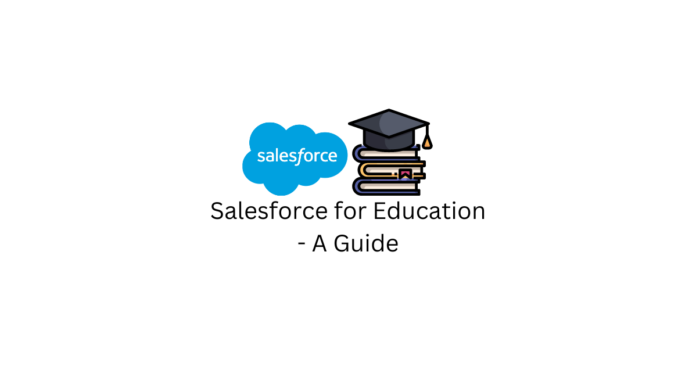Technology has become a part of the educational landscape. Schools are using customer relationship management (CRM) systems to keep track of student records and performance, while students are turning to online writing services for help with their coursework. With more technology integration, there is an increasing need for teachers to be knowledgeable about technology in order to best teach and support their students.
Technology can also help make learning easier, more interesting, and more accessible for all students. For example, educators can use interactive tools such as games or simulations to engage learners and make topics like math or science come alive. Plus, digital resources allow teachers to customize instruction so that every student receives what they need most from each lesson.
Online Services for Students
Online assignment services have become popular with students thanks to the convenience and value they offer. With just a few clicks, you can submit assignments and receive feedback from experienced writers who specialize in that particular subject area. The quality of work produced by an essay writing service is often higher than what you may be able to produce alone. Besides, numerous websites now offer mobile versions of their platforms, making it even easier for students to access help and improve grades.
Can You Use Salesforce for Education?
Salesforce is a customer relationship management (CRM) platform that helps businesses organize their contacts, sales activities, and more. It can also be used in education as an educational management system. Actually, Salesforce provides an easy way for educators to stay organized and connected with the school community. Believe it or not, it’s a great tool for improving the educational experience for everyone involved.
Salesforce for Higher Education


Sales can be very beneficial for the education system. Here are several ways how it can be applied.
Streamline Student Data Management
Salesforce enables universities to store and manage student data in a single, secure location. This reduces the time spent managing multiple databases and helps improve accuracy and efficiency. Additionally, administrators can use Salesforce’s reporting capabilities to quickly identify trends in enrollment and graduation rates, course offerings, and other important metrics.
Enhance Student Recruitment Efforts
You can keep track of where potential students are in the application process by using Salesforce. Administrators will be able to see specific information on each prospect, which will help them to make recruiting messages that are more likely to appeal to the appropriate people. Salesforce also has strong capabilities that make it easy to get in touch with the ideal prospects based on their interests and other factors.
Boost Student Engagement
Salesforce can also help institutions connect with their students in a meaningful way. Administrators may utilize Salesforce’s communication features to offer tailored messages and updates to students, which helps them feel more connected to their university. In addition, administrators may monitor student participation and make sure their requirements are being met with the use of Salesforce analytics.
Simplify Event Management


Salesforce makes it easier for colleges and institutions to plan and run events like conferences and alumni reunions. With Salesforce, managers can use a common platform to keep information about events in one place and make it easy for people to sign up for events. The progress of events may also be monitored using Salesforce to guarantee their success.
Increase Donor Engagement
Salesforce’s powerful donor management tools allow universities to engage more effectively with donors. Administrators have access to detailed insights on individual donors that can be used to personalize outreach campaigns and create tailored messages that are likely to resonate with specific donors. Furthermore, administrators can use Salesforce’s reporting capabilities to measure the impact of their fundraising efforts and identify areas for improvement.
Improve Alumni Relationships
With Salesforce, universities can quickly build relationships with alumni by staying in touch with them through email campaigns or social media posts. Salesforce makes it easy to keep track of alumni activity and ensure they remain engaged with their alma mater. Additionally, administrators can use Salesforce’s dashboard features to measure the success of outreach initiatives and make improvements where needed.
Increase Collaboration Opportunities
Salesforce helps students, teachers, and other parties work together. It gives them a central place to share information and documents. This lets institutions create a place where people can learn and be creative, which is good for everyone. Also, administrators may utilize Salesforce data to find opportunities for multiple departments or teams to work together.
Other Helpful Software for Higher Education


Apart from Salesforce, higher education can benefit from a number of other digital tools. Check them out below.
1. Learning Management Systems (LMS)
A Learning Management System helps educational institutions with managing, organize, and monitor the data of students and the faculty and reduce manual labor. Popular LMSs include Blackboard, Canvas, and Moodle. These systems allow teachers to:
- create digital course material for their students
- assign tasks
- deliver quizzes and exams
- offer feedback
- provide grades.
2. Content Delivery Networks (CDN)
CDNs are a network of servers located around the world that host large amounts of web content such as images, videos, documents, and more. They help reduce the latency for users accessing content by keeping it closer to the user’s location instead of having to download from one central server. CDNs can be used in higher education to deliver course content quickly and reliably.
3. eCommerce Platforms
An eCommerce platform is a software application used for creating an online store. Popular platforms include:
- Shopify
- WooCommerce
- Magento.
These platforms provide features such as product management, payment processing, shipping integration, and more, making them ideal for universities offering online courses or merchandise for sale.
4. Video Conferencing Software
Video conferencing software allows users to connect with one another over the internet in real time via audio and video communication. Popular applications include Zoom, Skype, and Google Hangouts Meet. This type of software can be used by educators to conduct lectures remotely or to facilitate discussion forums among students around the world.
5. Virtual Classrooms
Virtual classrooms are cloud-based learning environments that replicate the physical classroom experience. They allow teachers to interact with students in real-time and provide features such as:
- document sharing
- whiteboards
- breakout rooms.
Popular virtual classroom platforms include Google Classroom, Adobe Connect, and Microsoft Teams.
6. Assessment Software
Assessment software helps educators create tests and assessments for their courses quickly and easily. It offers features such as:
- reporting
- question banks
- custom scoring rules
- analytics and more.
Popular assessment software includes Blackboard’s TestGen and Quizizz. These platforms can be used to evaluate student understanding of course material in a variety of ways.
7. Student Engagement Platforms
Student engagement platforms provide features such as:
- student feedback
- polling and surveys
- class discussions
- assignments submission
- grades tracking and more.
Popular platforms include Schoology and Edmodo. This type of software is useful for helping teachers to effectively communicate with their students and track their progress.
8. File Sharing Tools
File-sharing tools allow users to easily share large files over the internet without relying on email systems or other services that have file size limitations. Popular applications include Google Drive, Dropbox and Box. This type of tool can be used by educators to distribute course materials quickly among their students.
9. Plagiarism Detection Software
Plagiarism detection software helps detect instances of plagiarized content in text-based documents or essay submissions. Popular applications include iThenticate and Turnitin. This type of software can be used by educators to ensure that their students are submitting original work.
10. Gamification Platforms
Gamification platforms provide features such as:
- leader boards
- badges
- challenges and more.
They engage learners and encourage participation in activities. Popular platforms include Classcraft and Kahoot!. These types of tools can be used by educators to increase student engagement in the classroom.











